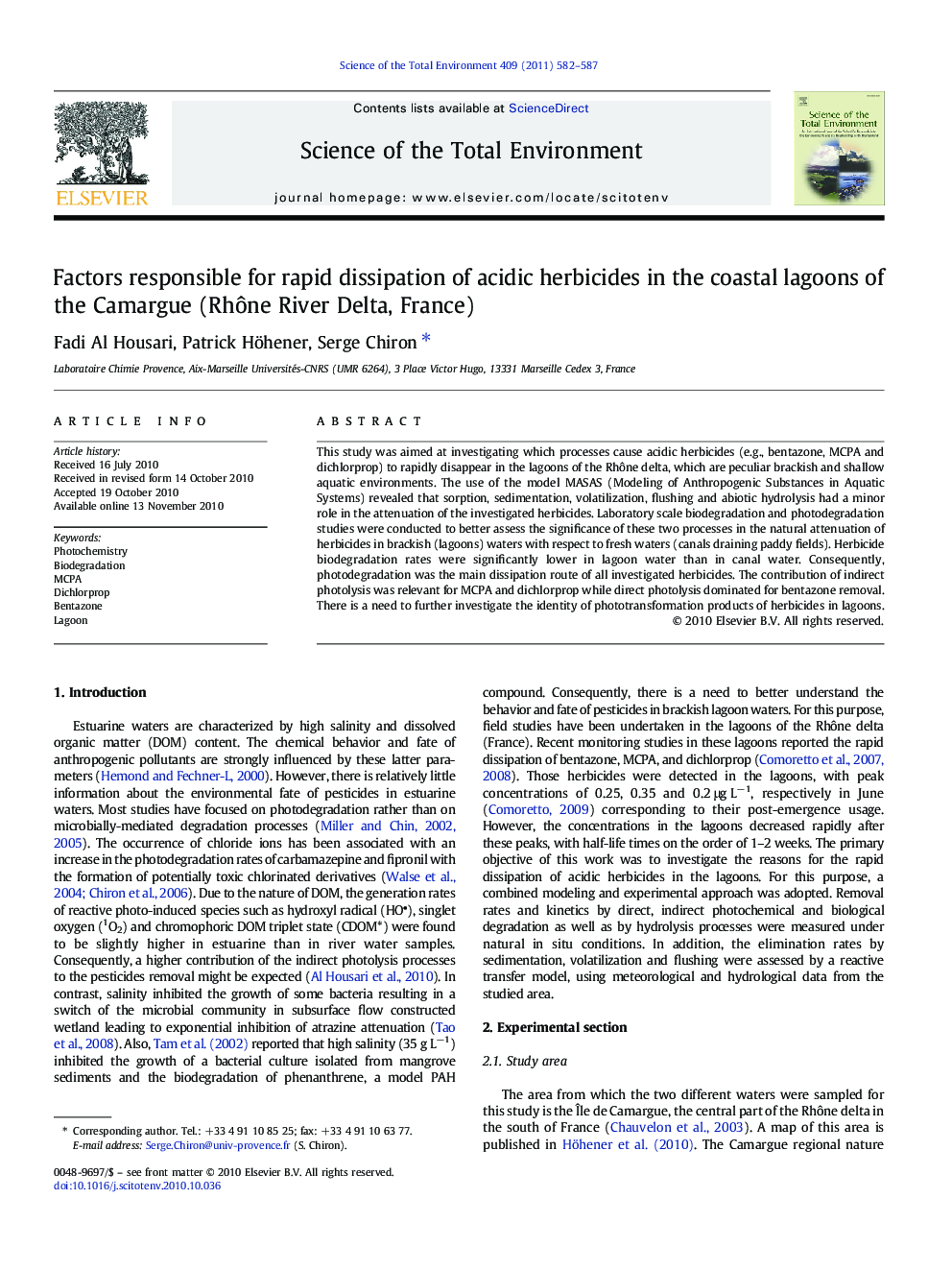| Article ID | Journal | Published Year | Pages | File Type |
|---|---|---|---|---|
| 4430092 | Science of The Total Environment | 2011 | 6 Pages |
This study was aimed at investigating which processes cause acidic herbicides (e.g., bentazone, MCPA and dichlorprop) to rapidly disappear in the lagoons of the Rhône delta, which are peculiar brackish and shallow aquatic environments. The use of the model MASAS (Modeling of Anthropogenic Substances in Aquatic Systems) revealed that sorption, sedimentation, volatilization, flushing and abiotic hydrolysis had a minor role in the attenuation of the investigated herbicides. Laboratory scale biodegradation and photodegradation studies were conducted to better assess the significance of these two processes in the natural attenuation of herbicides in brackish (lagoons) waters with respect to fresh waters (canals draining paddy fields). Herbicide biodegradation rates were significantly lower in lagoon water than in canal water. Consequently, photodegradation was the main dissipation route of all investigated herbicides. The contribution of indirect photolysis was relevant for MCPA and dichlorprop while direct photolysis dominated for bentazone removal. There is a need to further investigate the identity of phototransformation products of herbicides in lagoons.
Research Highlights► Photodegradation is the main dissipation route of herbicides in brackish lagoons. ► Herbicides biodegradation are significantly lower in brackish than in fresh waters. ► There is a need to investigate the identity of phototransformation products.
